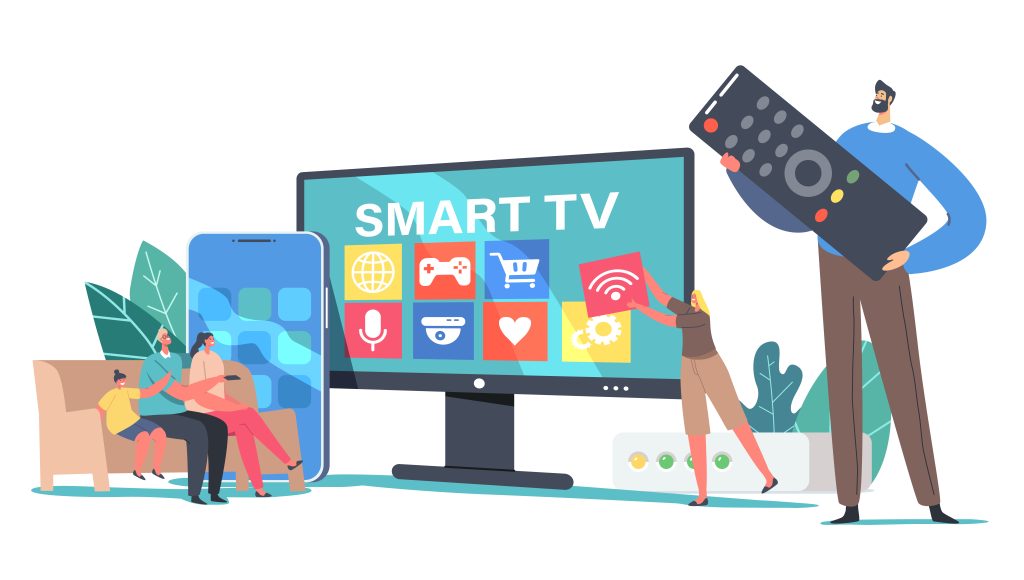Innovations in Digital Marketing: The Role of Smart TV Applications

Digital marketing has greatly changed over the years due to changes in consumer behavior and advances in technology. One of the many new technologies includes smart television apps, which marketers now use to communicate well with their customers by targeting a certain audience for their products.
The Rise of Smart TVs
The rise of smart TVs has seen them being adopted by a larger fraction of American homes, estimated at 79% in 2024. These devices offer not just traditional television content but also access to streaming services, social media, and interactive applications. As viewers become participants, it provides a special chance for advertisers to engage clients better.
Targeted Advertising
Smart TV applications have numerous benefits, one of them being easy advertising. Marketers can make use of data analysis and information about the audience to customize ads that will suit given demographic groups, individual preferences, and viewing patterns. Customizing advertisements in this way serves to improve the relevance of the commercials, heightening their chances of engagement and conversion.
For example, companies like Oxagile, a smart tv app development firm, specialize in creating applications that enable advertisers to target users based on their viewing history, geographic location, and interests. This precision not only improves the effectiveness of campaigns but also provides a better experience for consumers, who are more likely to see content that resonates with them.
Interactive Advertising Experiences
Due to smart TV applications, there are interactive advertising experiences that can only be found in the digital space and not in the traditional media. With these applications, it is possible for brands to come up with interesting material which calls upon the audience to get involved; as a result, this will help in improving the brand’s visibility while promoting customer allegiance.
Besides, Apple TV and Amazon Fire TV applications allow easy connection with online stores so that viewers can surf and make purchases as they watch their favorite programs. With such a high level of interactivity, people who were initially passive viewers become actively involved users, enhancing the advertising effectiveness by increasing its ability to be remembered later.
Enhanced Analytics and Insights
The development of smart TV applications has also enabled the collection of comprehensive data and analysis on viewer behavior. Through these apps, marketers can easily monitor various parameters like the level of interaction, click-through rates, and viewing trends; therefore, they will be in a position to make decisions based on facts.
These insights help brands understand which content resonates most with their audience, enabling them to refine their marketing strategies accordingly. The ability to measure the success of campaigns with greater accuracy also aids in optimizing budgets and resources, ultimately leading to improved ROI.
Cross-Platform Integration
Smart TV applications facilitate cross-platform integration, allowing marketers to create cohesive campaigns that span multiple channels. By connecting television advertising with social media, mobile apps, and online platforms, brands can ensure a consistent message across all touchpoints.
For instance, a smart TV campaign might encourage viewers to engage with a brand’s social media page or visit its website for exclusive content or offers. This multi-channel approach not only increases brand visibility but also enhances consumer engagement by providing various entry points for interaction.
Challenges and Considerations
While smart TV applications present numerous opportunities for digital marketing, they also come with challenges. Privacy concerns and data security are paramount as consumers become increasingly wary of how their data is being used. Marketers must prioritize transparency and ensure that their practices comply with regulations to build trust with consumers.
Additionally, the fast-paced nature of technology means that marketers must continually adapt to evolving trends and consumer preferences. Keeping up with advancements in smart TV technology and understanding how to leverage them effectively is crucial for staying competitive in the digital landscape.
The Future of Smart TV Applications in Digital Marketing
The evolution of digital marketing is closely linked to the advancements in smart TV technology. Interactive advertising experiences are expected to be improved by emerging trends like artificial intelligence, augmented reality, and virtual reality.If you take AI, for example, it is capable of forming unique content recommendations. On the other hand, AR creates new advertising formats that completely immerse customers in digital space and interact with reality. These advancements will likely redefine consumer engagement, making it more dynamic and interactive.
